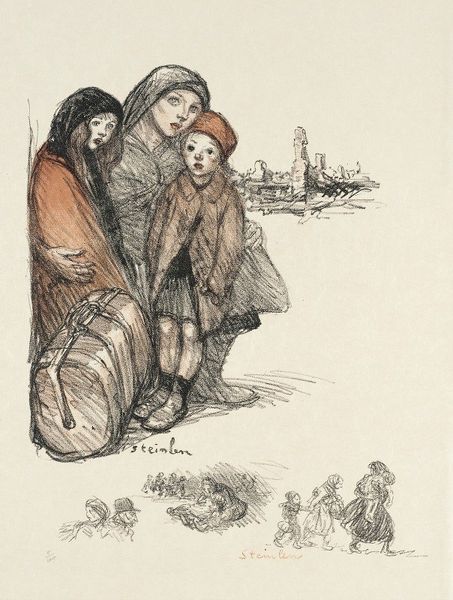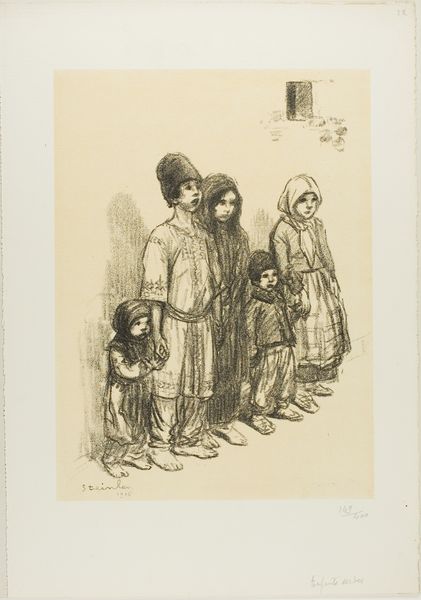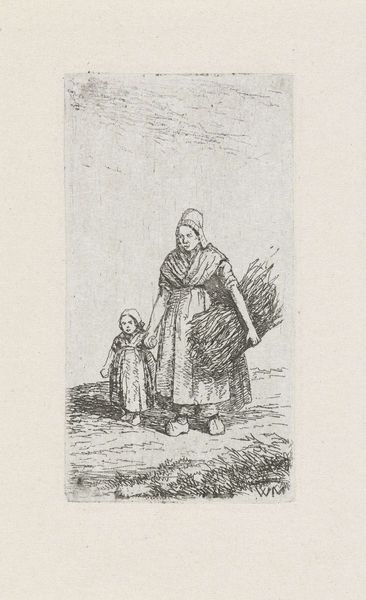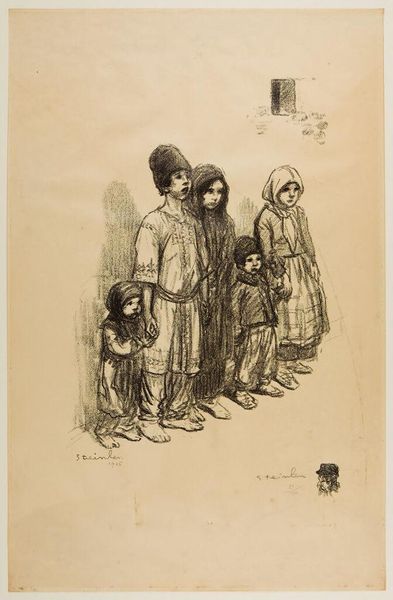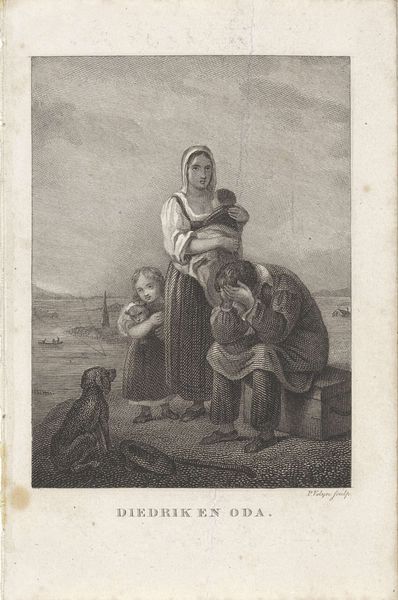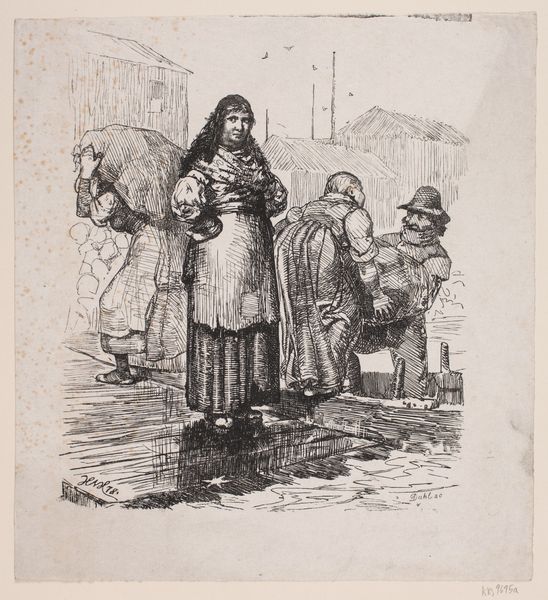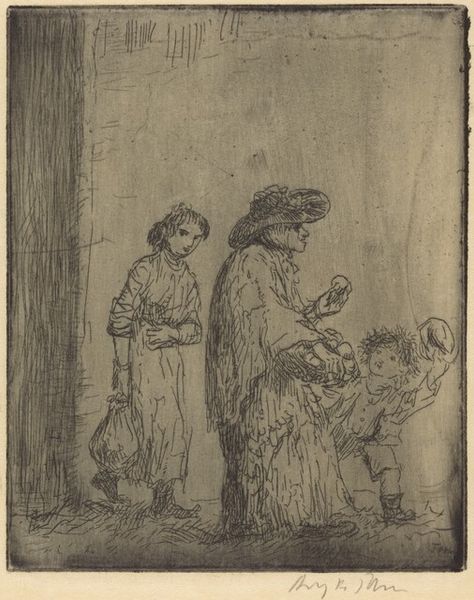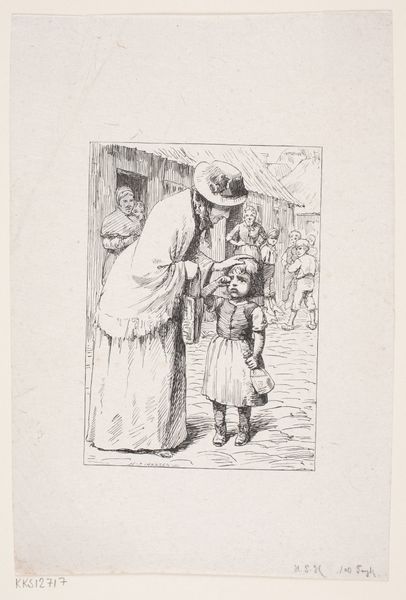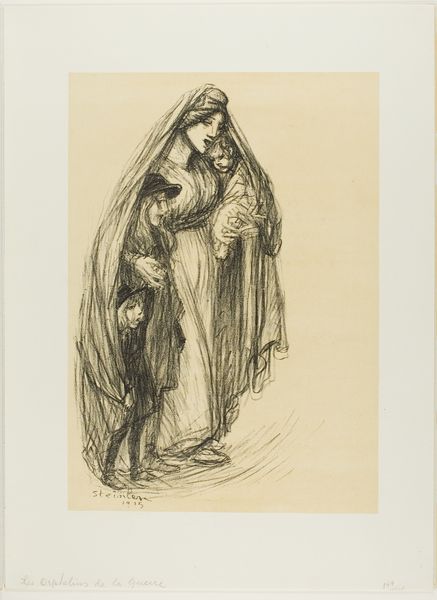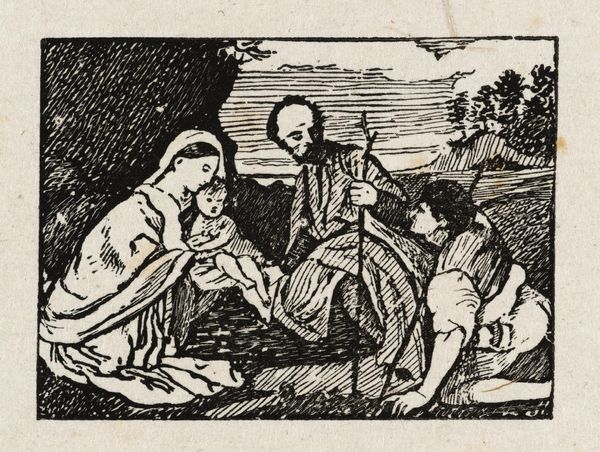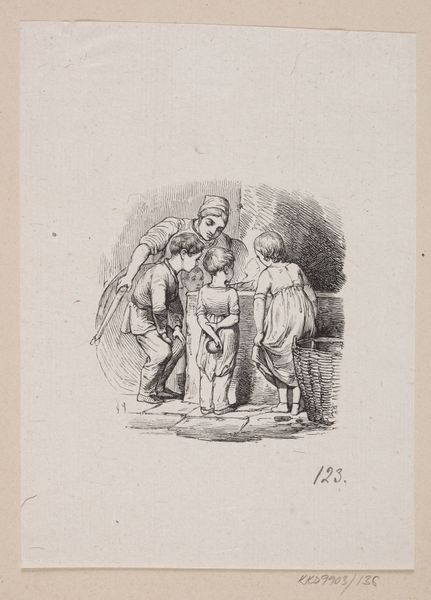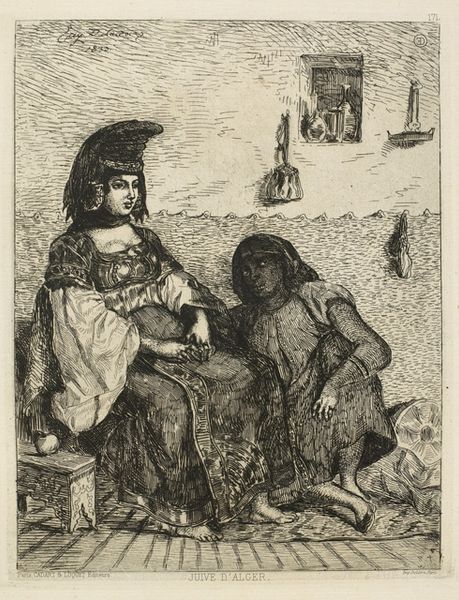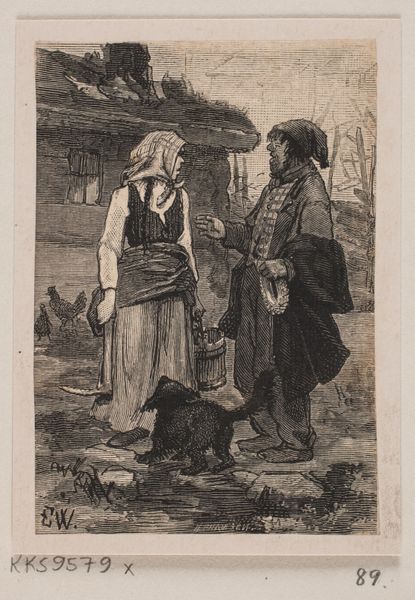
Copyright: Public Domain: Artvee
Editor: This is Théophile Alexandre Steinlen’s "Retour au Foyer," a pencil and charcoal drawing from around 1918. It’s quite moving, isn’t it? The family's expressions are so somber, yet the rising sun suggests hope. How do you interpret this work? Curator: The title translates to "Return Home," a potent phrase during and after the First World War. Notice how Steinlen uses the sun—a universal symbol of rebirth and hope—juxtaposed against the figures' downcast eyes. What feelings do their faces evoke in you? Editor: Mostly sadness and exhaustion, but also a sense of quiet determination. I can't help but wonder about their journey and what they've endured. Curator: Exactly. Consider the cultural memory embedded in the image of refugees, of forced migration. Steinlen likely intends to tap into a deeper, collective empathy. The head studies around the central image reinforce this, don't you think? As if these individual portraits represent the multitude displaced by war? Editor: Yes, that makes perfect sense. It’s like he’s showing us fragments of many different stories within a single image. The drawing style, loose and expressive, also adds to the feeling of immediacy and rawness. Curator: Indeed. And don’t underestimate the symbolic weight of the animals further off. They reflect the relationship with nature and the natural state of living, contrasting the condition of these people. Is that something that stood out to you when you first saw it? Editor: Not immediately, but I see it now. Thank you. This piece reveals how Steinlen captured the emotional landscape of a post-war world. Curator: Absolutely. And how visual symbols continue to carry emotional weight and meaning through generations.
Comments
No comments
Be the first to comment and join the conversation on the ultimate creative platform.
